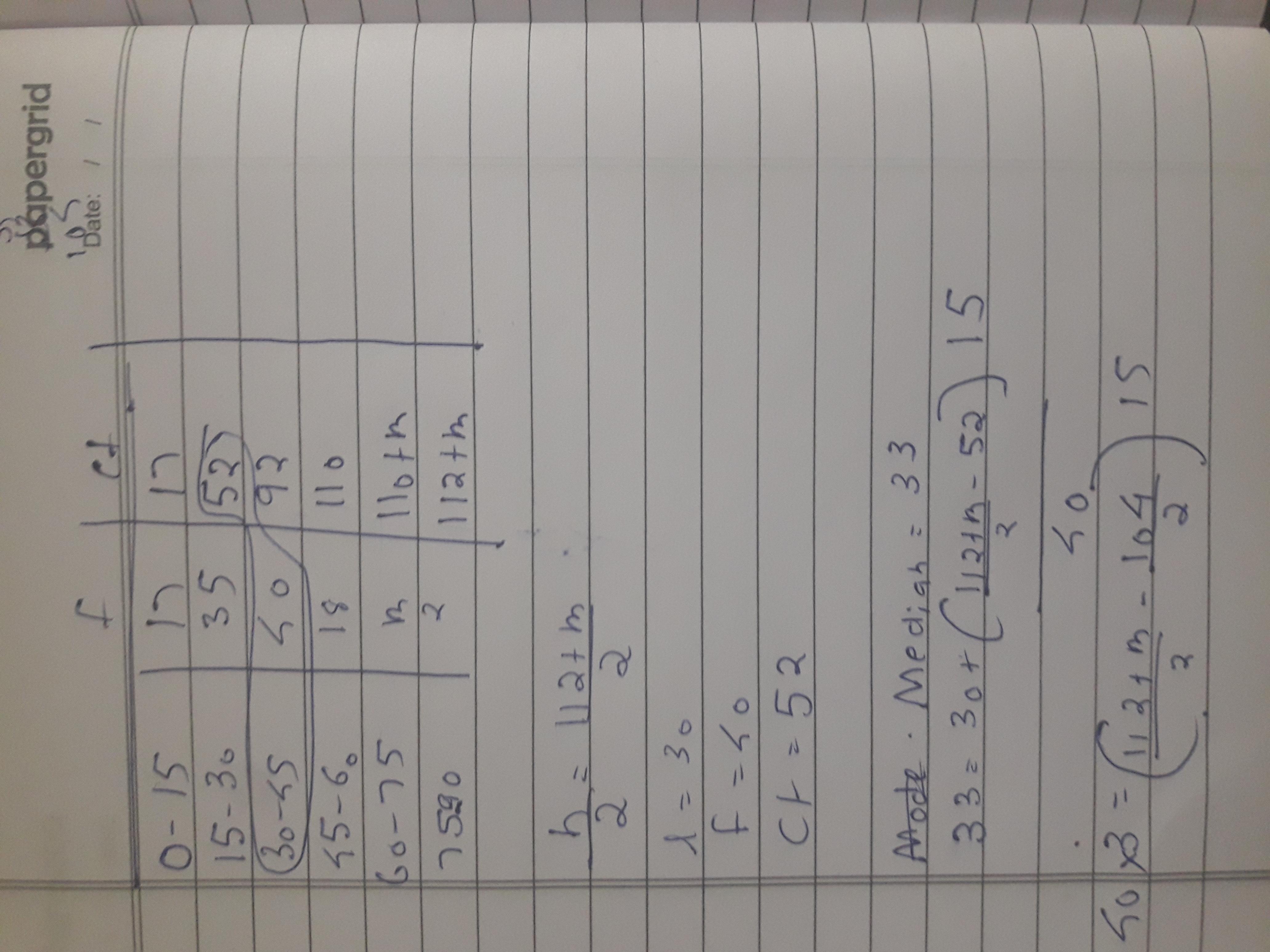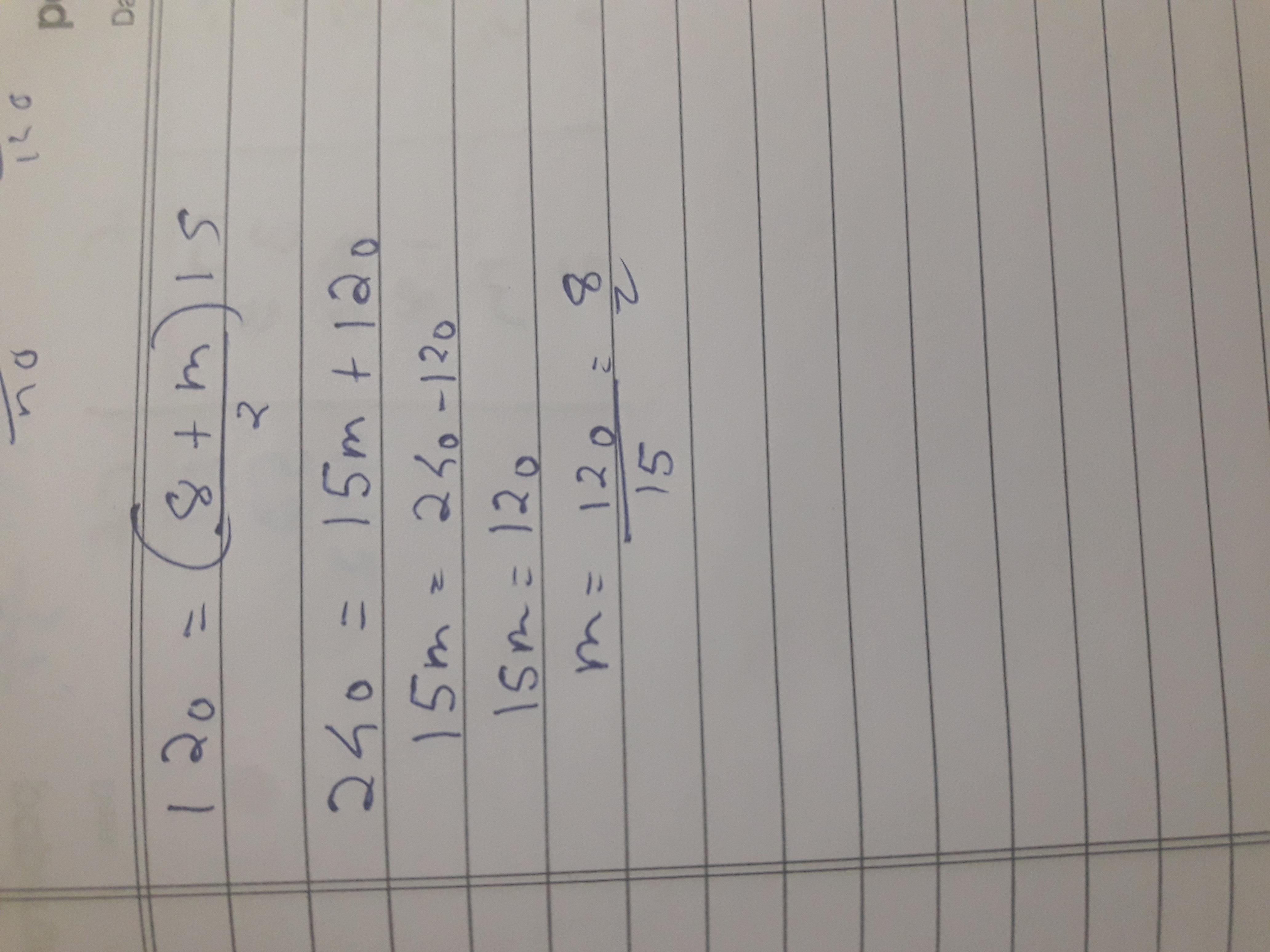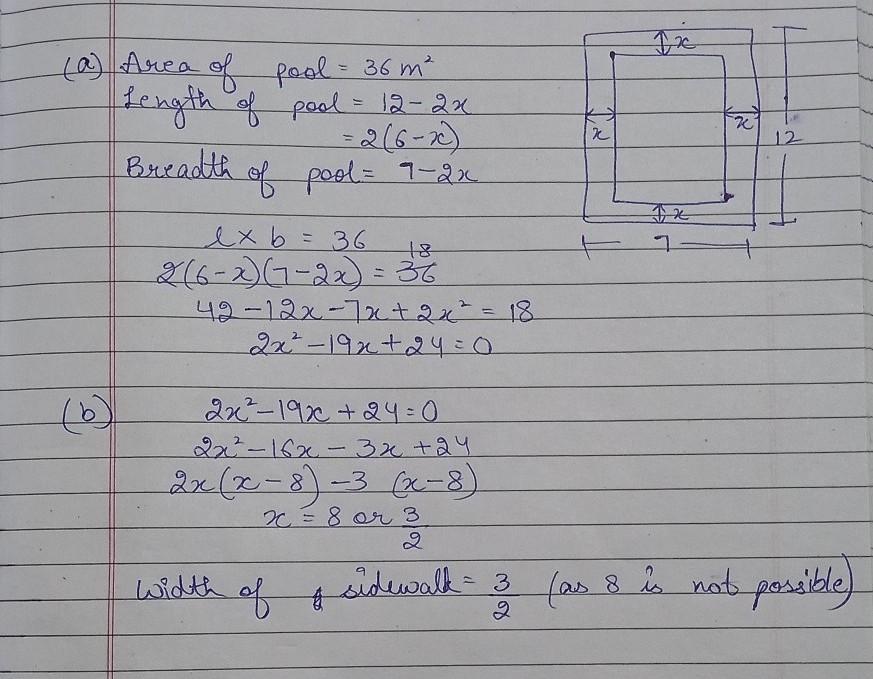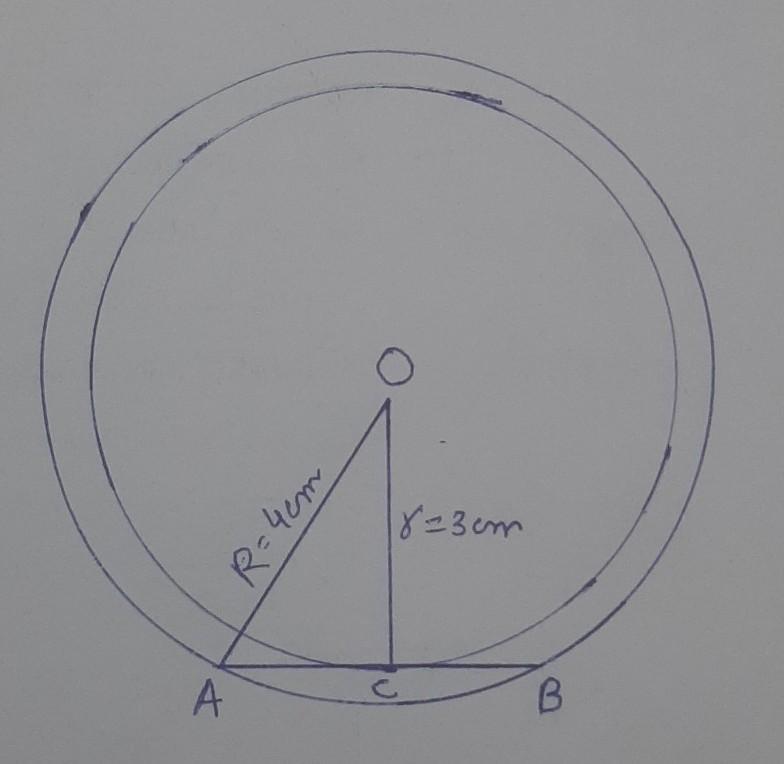The mode of a grouped frequency distribution is 75 and the modal class is 65-80. The frequency of the class preceding the modal class is 6 and the frequency of the class succeeding the modal class is 8. Find the frequency of the modal class
Answers 2
[tex]\large\underline{\sf{Solution-}}[/tex]
We know,
Mode of the continuous series is given by
[tex]{\boxed{ \boxed{\sf{Mode = l + \bigg(\dfrac{f_1 - f_0}{2f_1 - f_0 - f_2} \bigg) \times h }}}} \\ \\ [/tex]
where,
l is lower limit of modal class.
[tex] \sf{f_1} [/tex] is frequency of modal class
[tex] \sf{f_0} [/tex] is frequency of class preceding modal class
[tex] \sf{f_2} [/tex] is frequency of class succeeding modal class
h is class height.
Now, from given data we concluded that
[tex]\rm \: f_0 = 6 \\ [/tex]
[tex]\rm \: f_1 = f \\ [/tex]
[tex]\rm \: f_2 = 8 \\ [/tex]
[tex]\rm \: l = 65 \\ [/tex]
[tex]\rm \: h = 15 \\ [/tex]
[tex]\rm \: Mode = 75 \\ [/tex]
So, on substituting the values in above formula, we get
[tex]\rm \: 75 = 65 + \bigg[\dfrac{f - 6}{2 \times f - 6 - 8} \bigg] \times 15\\ [/tex]
[tex]\sf \: 75 - 65 = \dfrac{f - 6}{2f - 14} \times 15 \\ \\ [/tex]
[tex]\sf \: 10 = \dfrac{f - 6}{2f - 14} \times 15 \\ \\ [/tex]
[tex]\sf \: 2 = \dfrac{f - 6}{2f - 14} \times 3 \\ \\ [/tex]
[tex]\sf \: 2(2f - 14) = 3(f - 6) \\ \\ [/tex]
[tex]\sf \: 4f - 28 = 3f -18 \\ \\ [/tex]
[tex]\sf \: 4f - 3f = 28 -18 \\ \\ [/tex]
[tex]\bf\implies \:f = 10 \\ \\ [/tex]
[tex]\rule{190pt}{2pt} \\ [/tex]
Additional Information :-
1. Mean using Direct Method
[tex]\boxed{ \rm{ \:Mean = \dfrac{ \sum f_i x_i}{ \sum f_i} \: }} \\ \\ [/tex]
2. Mean using Short Cut Method
[tex]\boxed{ \rm{ \:Mean =A + \dfrac{ \sum f_i d_i}{ \sum f_i} \: }} \\ \\ [/tex]
3. Mean using Step Deviation Method
[tex]\boxed{ \rm{ \:Mean =A + \dfrac{ \sum f_i u_i}{ \sum f_i} \times h \: }} \\ \\ [/tex]
-
Author:
abelbrown
-
Rate an answer:
5
Answer:
Given :-- The mode of a grouped frequency distribution is 75 and the modal class is 65 - 80.
- The frequency of the class preceding the modal class is 6 and the frequency of the class succeeding the modal class is 8.
- What is frequency of the modal class.
[tex]\clubsuit[/tex] Mode Formula :-
[tex]\bigstar \: \: \sf\boxed{\bold{Mode =\: l + \bigg[\dfrac{f_1 - f_0}{2f_1 - f_0 - f_2}\bigg] \times h}}\: \: \: \bigstar\\[/tex]
where,
- l = Lower Limit of the Modal Class
- h = Class Size of the Class Interval
- f₁ = Frequency of the Modal Class
- f₀ = Frequency of the Class Preceding the Modal Class
- f₂ = Frequency of the Class Succeeding the Modal Class
Let,
[tex]\mapsto \bf Frequency_{(Modal\: Class)} =\: f_1\\[/tex]
Given :
- Mode = 75
- Lower limit = 65
- Class Size = 15
- Frequency of the class preceding = 6
- Frequency of the class succeeding = 8
According to the question by using the formula we get,
[tex]\implies \sf\boxed{\bold{Mode =\: l + \bigg[\dfrac{f_1 - f_0}{2f_1 - f_0 - f_2}\bigg] \times h}}\\[/tex]
[tex]\implies \sf 75 =\: 65 + \bigg[\dfrac{f_1 - 6}{2f_1 - 6 - 8}\bigg] \times 15\\[/tex]
[tex]\implies \sf 75 =\: 65 + \bigg[\dfrac{f_1 - 6}{2f_1 - 14}\bigg] \times 15\\[/tex]
[tex]\implies \sf 75 =\: 65 + \dfrac{f_1 - 6}{2f_1 - 14} \times 15\\[/tex]
[tex]\implies \sf 75 =\: 65 + \dfrac{15(f_1 - 6)}{2f_1 - 14}\\[/tex]
[tex]\implies \sf 75 =\: 65 + \dfrac{15f_1 - 90}{2f_1 - 14}\\[/tex]
[tex]\implies \sf 75 - 65 =\: \dfrac{15f_1 - 90}{2f_1 - 14}[/tex]
[tex]\implies \sf 10 =\: \dfrac{15f_1 - 90}{2f_1 - 14}[/tex]
By doing cross multiplication we get,
[tex]\implies \sf 15f_1 - 90 =\: 10(2f_1 - 14)[/tex]
[tex]\implies \sf 15f_1 - 90 =\: 20f_1 - 140[/tex]
[tex]\implies \sf 15f_1 - 20f_1 =\: - 140 + 90[/tex]
[tex]\implies \sf {\cancel{-}} 5f_1 =\: {\cancel{-}} 50[/tex][tex]\implies \sf 5f_1 =\: 50[/tex]
[tex]\implies \sf f_1 =\: \dfrac{\cancel{50}}{\cancel{5}}[/tex]
[tex]\implies \sf f_1 =\: \dfrac{10}{1}[/tex]
[tex]\implies \sf\bold{f_1 =\: 10}[/tex]
Hence, the required frequency of the modal class is :
[tex]\dag[/tex] Frequency Of Modal Class :
[tex]\dashrightarrow \sf Frequency_{(Modal\: Class)} =\: f_1\\[/tex]
[tex]\dashrightarrow \sf\bold{\underline{Frequency_{(Modal\: Class)} =\: 10}}\\[/tex]
[tex]\therefore[/tex] The frequency of the modal class is 10 .
-
Author:
romeomthx
-
Rate an answer:
8




